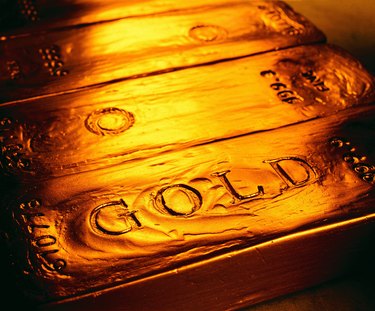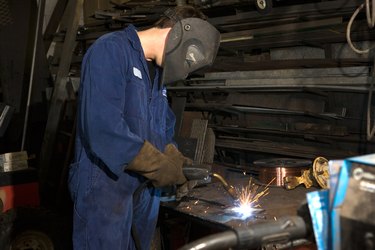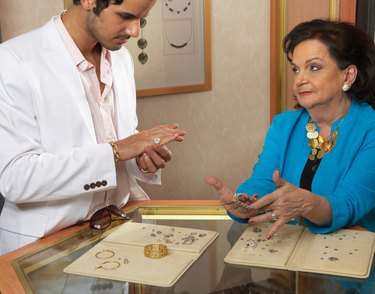
Melting gold and platinum is essential for some hobbies, such as making jewelry. In order to do this properly, having the right tools is paramount. Before you visit the specialty store or shop online, you should know a little about the torches, crucibles and furnaces required to do the job.
Torches
Video of the Day

To melt gold and platinum, you will need a gas-powered torch to use in conjunction with an oxygen tank or air compressor. Consult the torch manufacturer's instructions for how to set up the torch, as this process varies. The options for gases to power your torch are hydrogen, acetylene, propane and natural gas, which is a combination of methane and ethane gases.
Video of the Day
To use the same torch for melting both gold and platinum, you should use a tip on the torch with multiple ports, sometimes known as a rosebud tip. This tip should be able to screw on and off the torch instead of being soldered on, as the high temperatures required to melt platinum could melt the solder and ruin not only your torch but your precious metal.
Crucibles

A crucible is a vessel used to hold the metal as it melts. These come in many shapes and sizes, but are typically bowl- or cup-shaped. They are most often made of graphite and clay. However, graphite crucibles should not be used for platinum, as the platinum will draw the carbon out of the graphite, affecting the purity of your precious metal as well as the stability of the crucible. An alternative to graphite crucibles are those made of Hessian clay from Germany or of alundum. The latter are less expensive, but also less durable.
Hot crucibles should be handled with crucible tongs, while wearing protective gloves and eye wear.
Furnaces

Furnaces are devices that hold a crucible and heat it until the metal within is melted. Some furnaces are electrical, with a heated coil that wraps around the crucible. Others use radio waves in a process known as induction melting. A third type of furnace works in concert with your torch, with a hole under where the crucible is seated to feed in the torch and allow its flame to melt the metal.